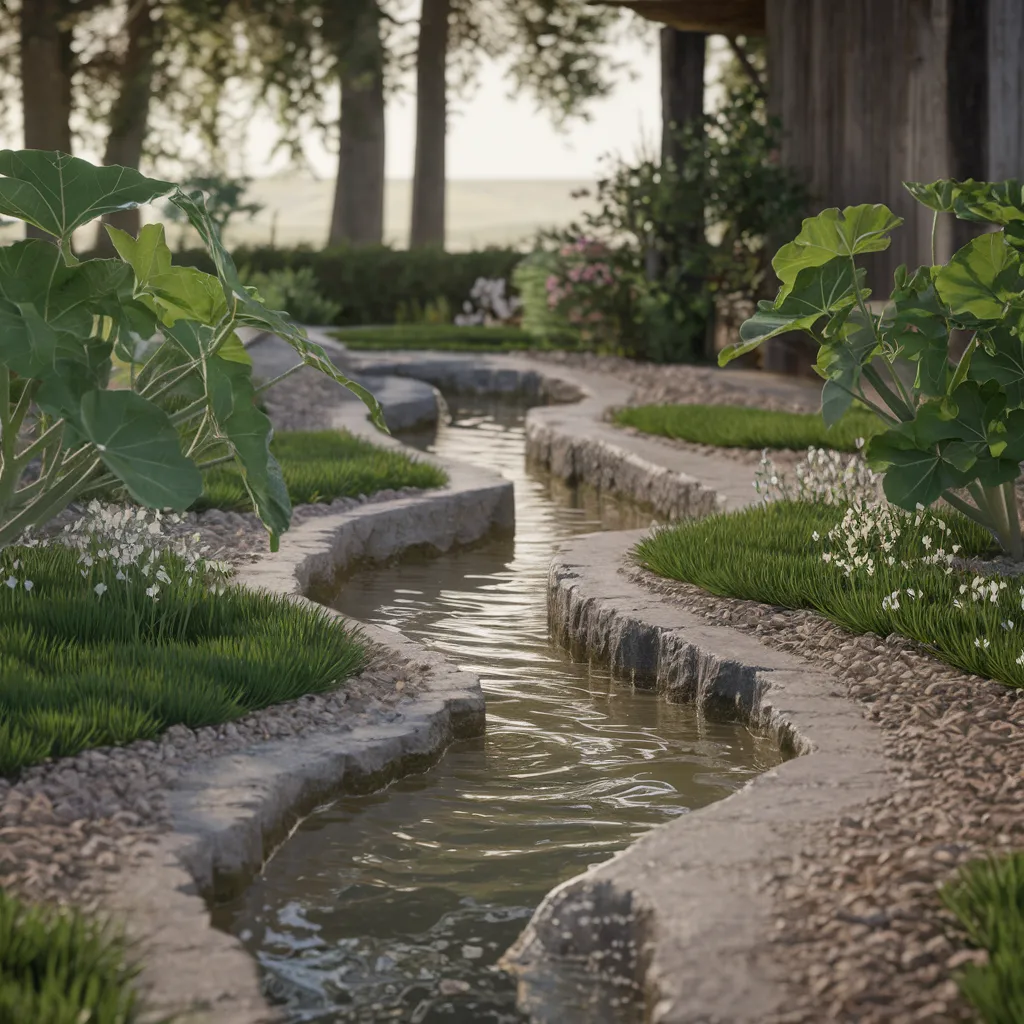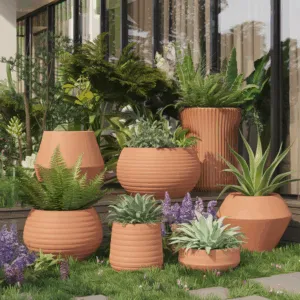In the realm of landscape design, few elements capture the essence of tranquility quite like the rill – a meandering stream that graces gardens with its soothing flow. These liquid tapestries have been woven into outdoor spaces for centuries, captivating the senses and evoking a sense of harmony with nature.
Unveiling Nature’s Liquid Tapestry
A rill is a narrow, shallow channel crafted to guide water’s gentle journey through a landscape. Its origins can be traced back to ancient civilizations, where the art of water management was a necessity for survival. In the arid regions of the Middle East, rills were meticulously designed to transport precious water resources for irrigation and drinking. Over time, these functional waterways evolved into intricate works of art, snaking sinuously around contours and embracing the natural terrain. Today, rills have transcended their utilitarian roots, becoming cherished features that infuse residential gardens with a sense of serenity and reflection.
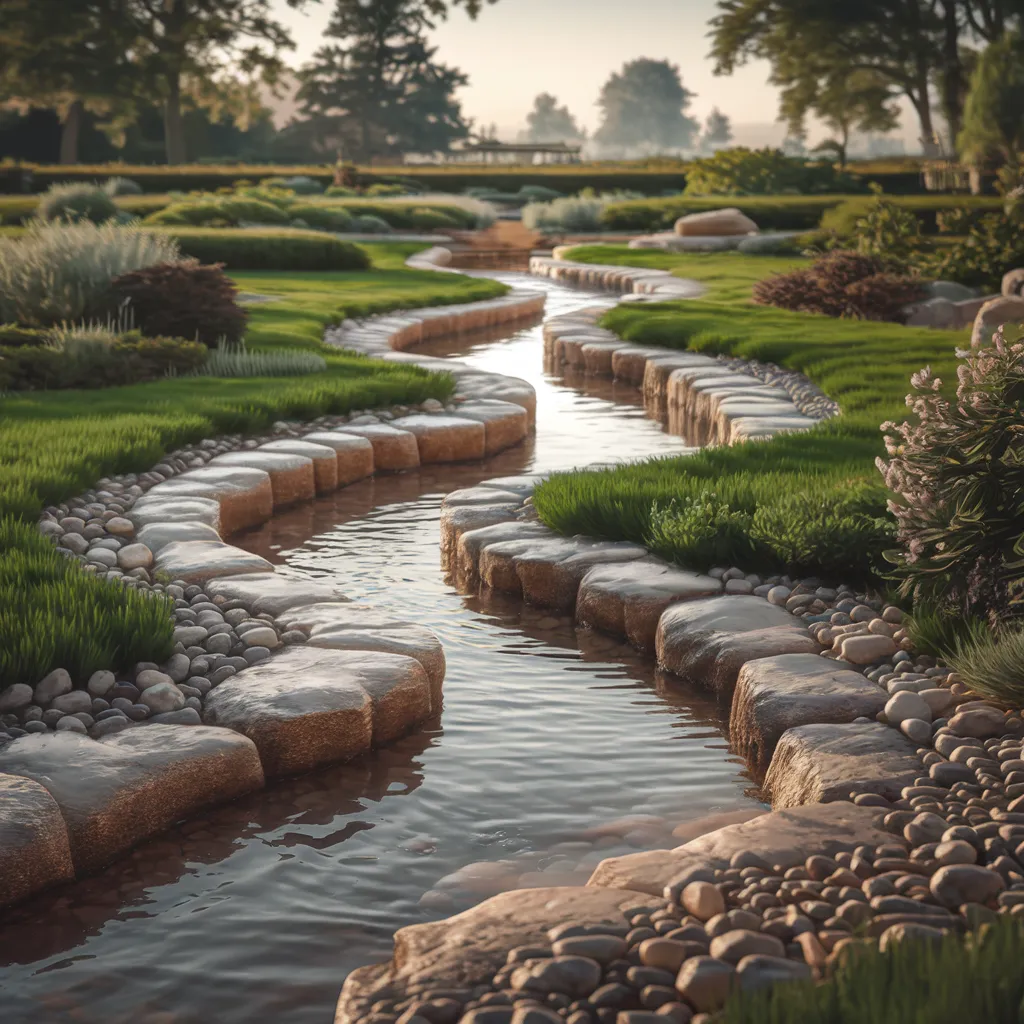
A sinuous, pebble‑lined rill snakes through broad sweeps of clipped lawn and drought‑tolerant groundcovers, each bend anchored by rounded granite bolsters. The layout borrows from Japanese dry‑river symbolism, yet its wide horizons and prairie plantings speak to contemporary meadow‑style design—structured calm with ecological flair. Dominant tones are muted and restful: sage and olive grasses, taupe riverstones, sandy beige banks and the silvery blush of dawn light gilding the water’s surface. The whole composition whispers quiet luxury and effortless flow.
Sculpting Streams: The Essence of Tranquility
In the modern context, rills serve primarily as aesthetic water features, adding a sense of serenity and reflecting the ever-changing hues of the sky. However, their design is a delicate balance of art and engineering, requiring careful consideration of various elements. The water source, whether a natural flowing spring or a pumped recirculating system with a reservoir tank, must be carefully integrated. The change in level along the rill’s path is a crucial factor, often achieved through a series of stepped rills if the terrain is steep. The rill’s meandering path should lead the eye through the garden in a visually pleasing manner, perhaps framing a view from a house window or guiding visitors on a tranquil journey.
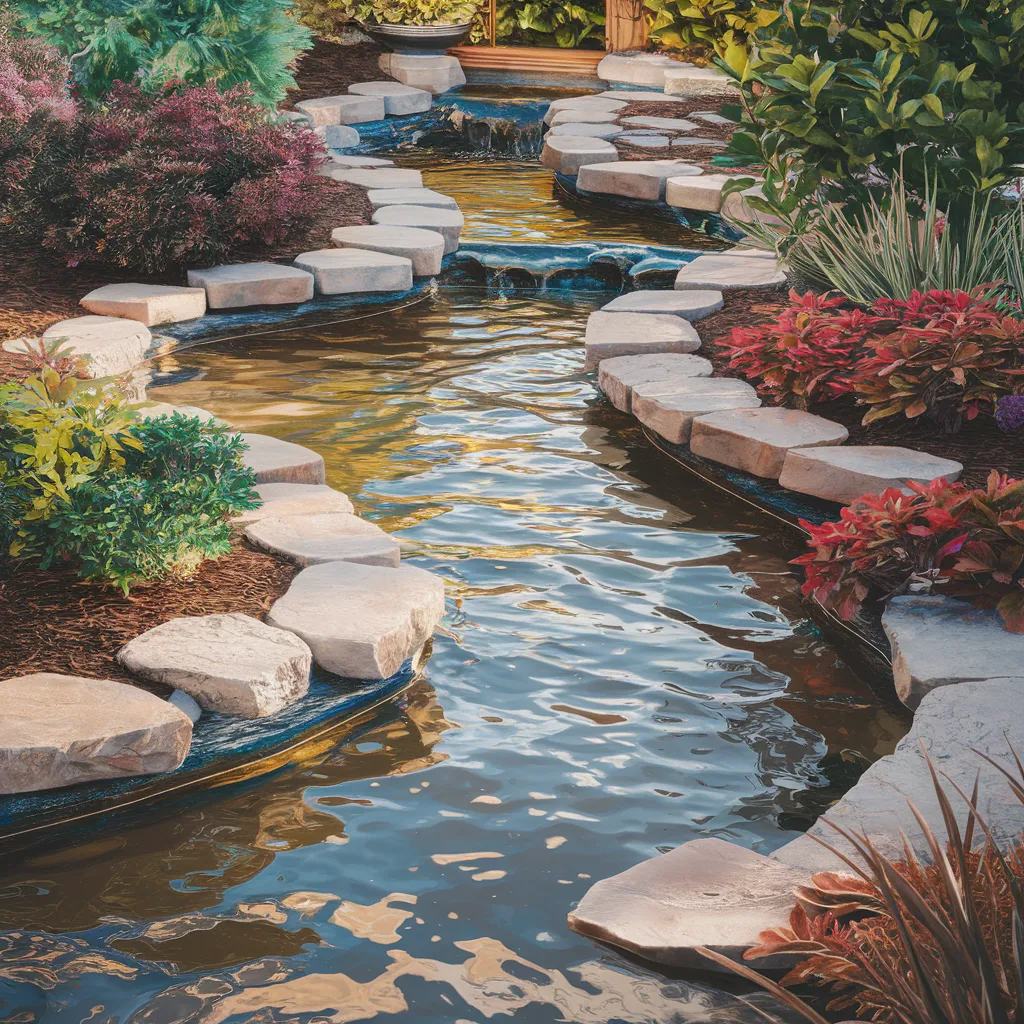
A playful, meandering channel slips between chunky limestone stepping blocks, weaving through mulched beds of crimson coleus, chartreuse euonymus, and teal juniper. The loose, welcoming layout recalls English cottage borders updated for modern backyards—naturalistic yet deliberately framed. Color dominates: sunlit water flickers gold, the stones echo warm oatmeal and sand, while foliage pops in jewel‑toned burgundy, emerald, and russet. The result is a friendly, lived‑in serenity that turns a utilitarian runnel into a tactile garden feature.
Mastering the Flow: Secrets of Rill Design
The choice of materials for a rill is a critical consideration, as it can greatly enhance or detract from the overall aesthetic. Dark stones like slate or granite provide a mirrored effect, reflecting the surrounding environment and creating a sense of depth. Cement with a waterproof render or painted stainless steel are also popular options, offering durability and versatility. Strategically placed lighting can further elevate the rill’s ambiance, casting a warm glow on the rippling water at night. Beyond the rill itself, thoughtful design elements like focal points, such as statues or faux waterfalls, can create dramatic effects and add visual interest. The water entry point can be concealed or highlighted, depending on the desired effect.
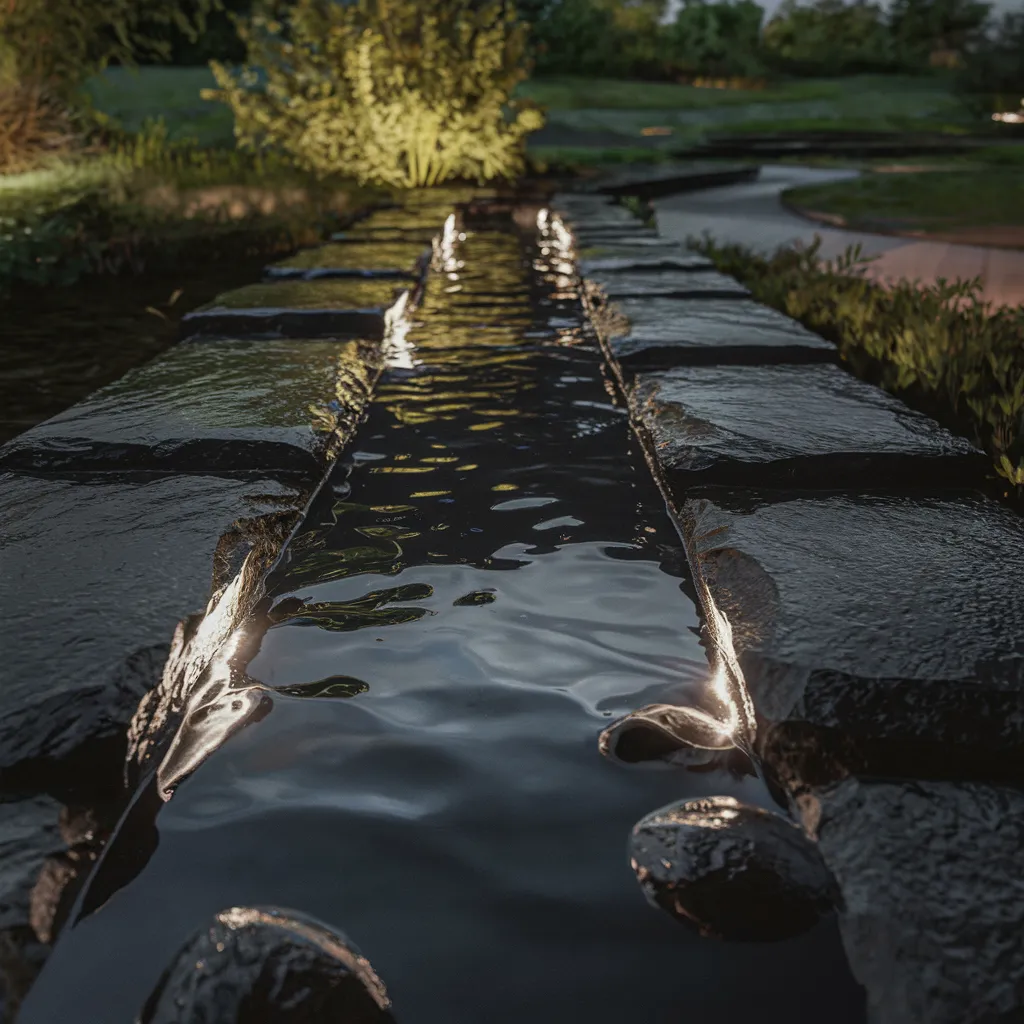
At dusk, a knife‑narrow watercourse carved from charcoal slate becomes a liquid ribbon of light. Recessed LEDs trace each edge, their golden shimmer skimming obsidian water and accentuating the stone’s tectonic texture. The scene exemplifies minimalist landscape styling: restrained materials, emphasis on line, drama through illumination. The palette is deliberately dark—inky black, gun‑metal grey, and deep evergreen screening—punctuated by the warm brass notes of the lighting, letting the rill itself read as a calm, luminous signature.
From Ancient Ingenuity to Modern Marvels
While the creation of a rill requires careful planning and consideration of practical elements, such as sufficient reservoir capacity, automatic water top-up systems, pump and filter housing, and electrical supply, the rewards are well worth the effort. A well-designed rill can serve as a stunning centerpiece for a garden, a focal point that draws the eye and invites contemplation. Its gentle flow and soothing sounds can transport visitors to a realm of tranquility, offering a respite from the hustle and bustle of daily life. Whether inspired by ancient ingenuity or infused with modern innovation, the timeless art of rill design continues to captivate and inspire, reminding us of the enduring power of nature to soothe the soul.
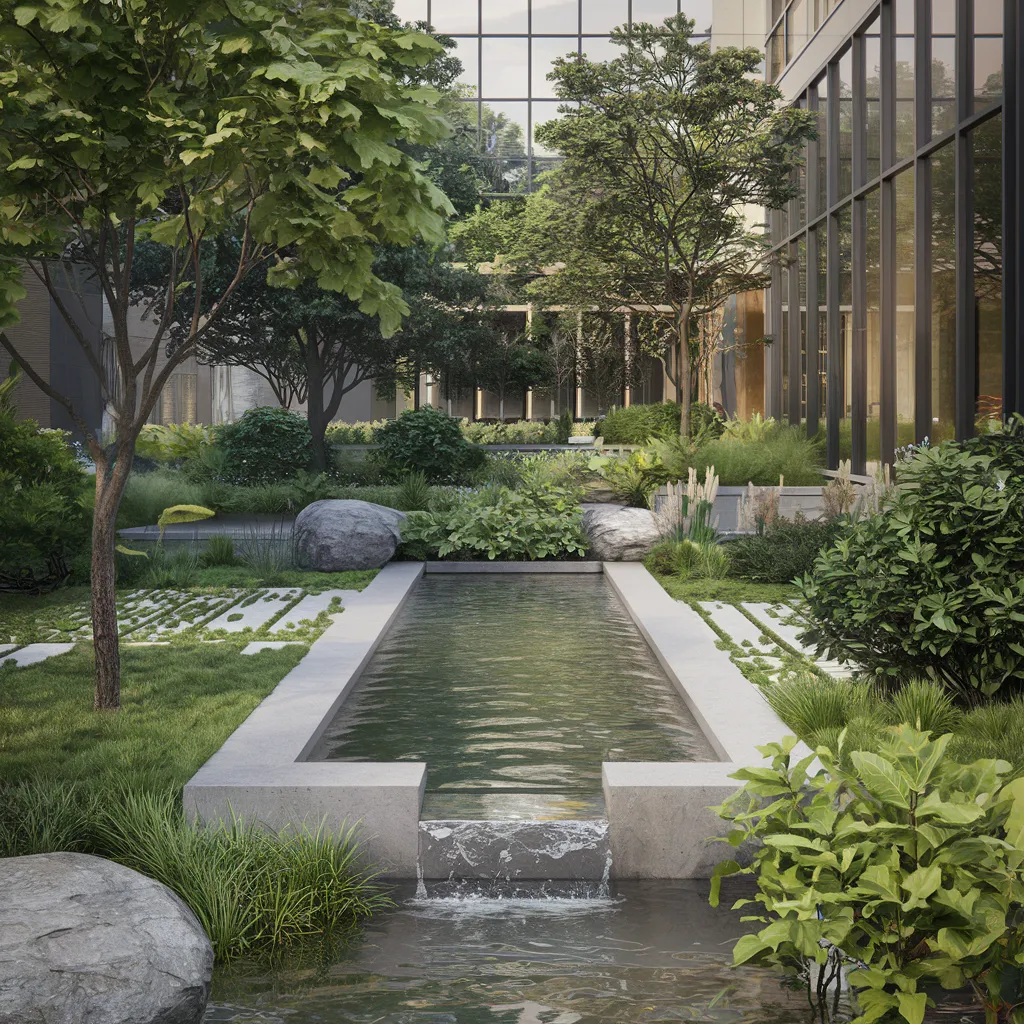
A mirror‑flat rill threads through a glass‑walled courtyard, its concrete lips drawing a crisp line between rippling water and billowing greenery. Shade trees, architectural boulders, and low swathes of hosta and fern create a biophilic buffer that softens the building’s hard modernist grid. The composition channels contemporary Japanese garden principles—disciplined geometry balanced by organic massing. Dominant hues skew verdant (leaf, moss, forest) against cool granite grey, with warm amber reflections glinting off the glazing to lend an inviting, serene glow.

